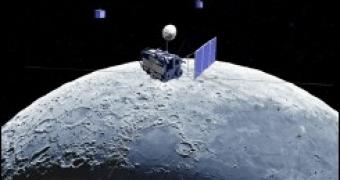Launched on September 14 this year, the so-called SELENE lunar orbiter began its extensive Moon exploration program last Friday, after about two months of preliminary tests that ensured that all instruments are functional. The Japan Aerospace Exploration Agency, or JAXA for short, announced, Wednesday, in a press conference, that the spacecraft is fully functional and has started its exploration mission.
The Kaguya lunar orbiter represents the most extensive lunar exploration project conducted since NASA's Moon exploration program in the middle of the 1960's, which involved five different Lunar Orbiters to study the lunar surface and to determine the best spot for a manned vehicle to make a successful landing. Having an original budget of 478 million dollar, the Kaguya lunar probe will make detailed measurements of the Moon's characteristics for the next ten months.
Alhough the exploration program started just as scheduled, JAXA confesses that there were some minor problems with the data received from the orbiter. During the testing phase of the program, JAXA employed Kaguya to take multiple pictures of the planet Earth, which were made generally available in high-definition images, showing the crystal clear blue planet rising above the Moon's horizon.
Furthermore, Kaguya delivered an additional two small satellites payload into the Moon's orbit, which have the role of studying the gravitational field produced by our large natural satellite. Kaguya has the primary mission to study the Moon's origins and its geologic evolutions, to collect data about the lunar surface and to perform radio science on lunar orbit.
The first Japanese lunar probe ever was launched in 1990, and, after only two months of operation, the lunar orbiter decayed its orbit, thus JAXA was forced to send it into an orbit that eventually crashed the vehicle into the lunar surface in 1993.
Multiple nations are currently expressing their will for future manned lunar missions, by sending their own lunar orbiters. One of them is China, which sent a similar vehicle in October, while India and Russia have scheduled launches in the next two years. Both Japan and the United States publicly shared their goal to put manned spacecraft on the Moon by the year 2020, and the possibility of founding the base for the construction of a future lunar outpost.

 14 DAY TRIAL //
14 DAY TRIAL //